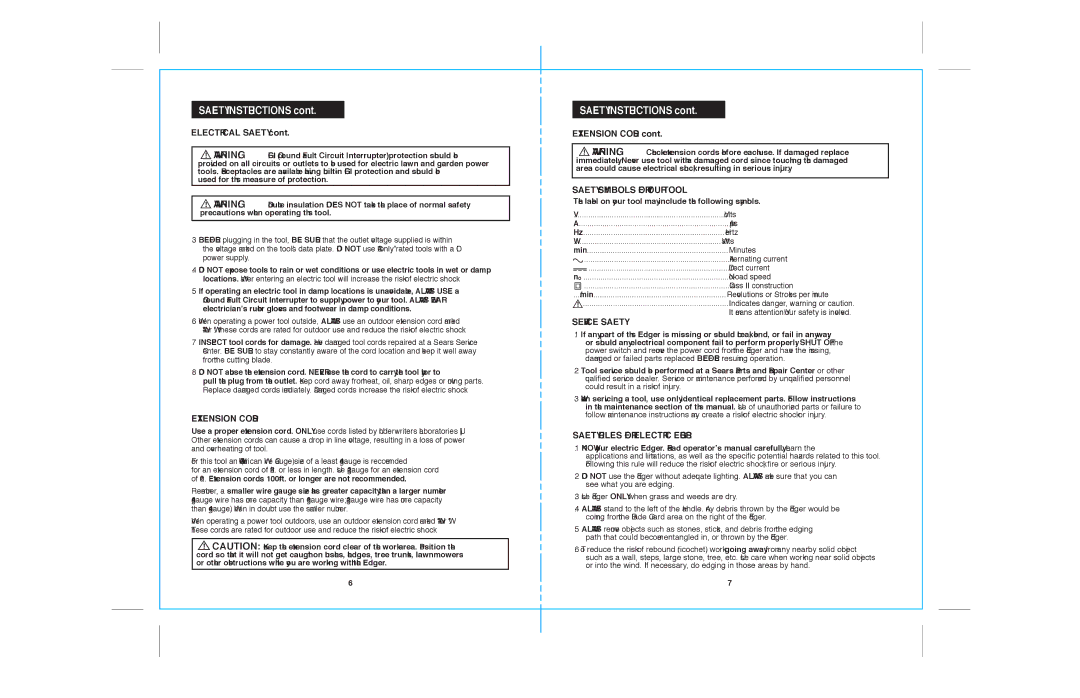172.79183 specifications
The Sears 172.79183 is a highly regarded model within the realm of consumer electronics, particularly noted for its versatility and user-friendly design. This device is recognized as an essential tool for various applications, combining traditional functionality with modern technologies to cater to an expanding audience of users.One of the main features of the Sears 172.79183 is its robust build quality. Designed with durability in mind, it can withstand the rigors of daily use, making it suitable for both personal and professional applications. The ergonomic design adds to user comfort, allowing for extended use without causing strain. This focus on user experience is complemented by a sleek and modern aesthetic that fits seamlessly into any environment.
In terms of technology, the Sears 172.79183 incorporates advanced functionalities that enhance its performance. The device includes intuitive controls, which allow users to easily navigate its various features and settings. Additionally, the inclusion of modern connectivity options, such as Bluetooth and USB ports, allows for effortless integration with other devices and peripherals. This versatility makes it possible for users to expand the device's functionality based on their specific needs.
Another characteristic that sets the Sears 172.79183 apart from competitors is its energy efficiency. Designed to minimize power consumption, it not only represents a cost-effective solution for users but also aligns with environmentally conscious practices. This consideration for sustainability is increasingly important in today’s market, where consumers are looking for products that are both functional and eco-friendly.
Furthermore, the Sears 172.79183 offers an array of accessories and compatible add-ons that allow users to tailor the device to their individual preferences. Whether it be for home entertainment, professional tasks, or leisure activities, this adaptability ensures that the Sears 172.79183 meets a diverse range of user requirements.
In summary, the Sears 172.79183 is a standout model that epitomizes the perfect blend of durability, advanced technology, and user-centric design. Its combination of essential features, modern connectivity options, and energy efficiency makes it a reliable choice for consumers looking for a versatile and effective electronic solution. This model not only addresses current user needs but also anticipates and adapts to future demands, ensuring its relevance in an ever-evolving market.

